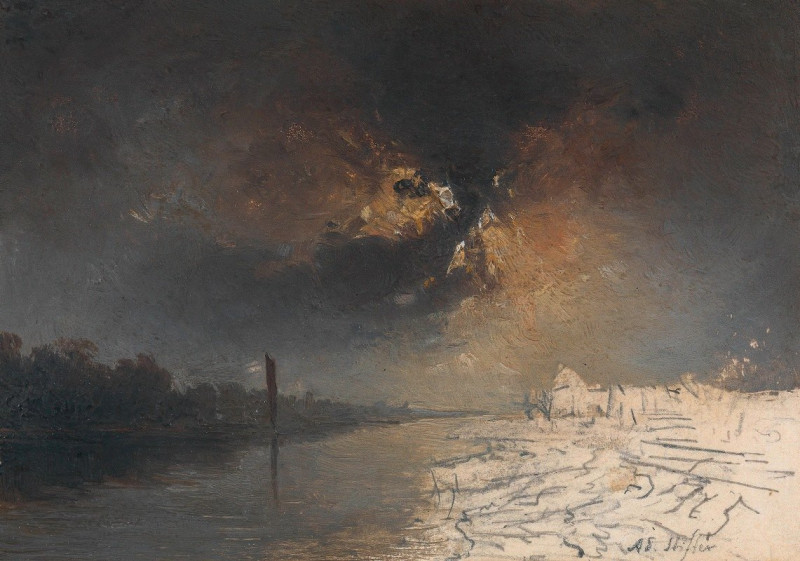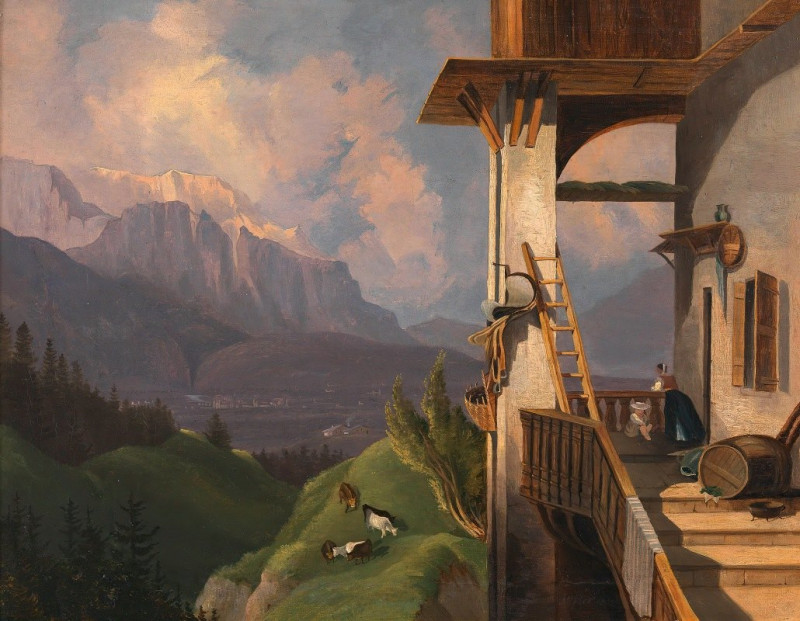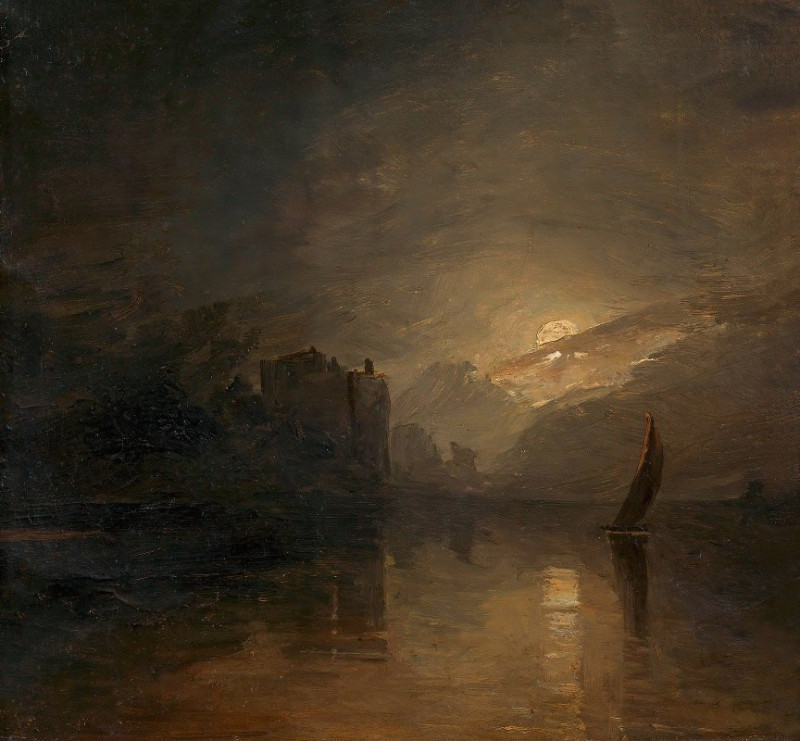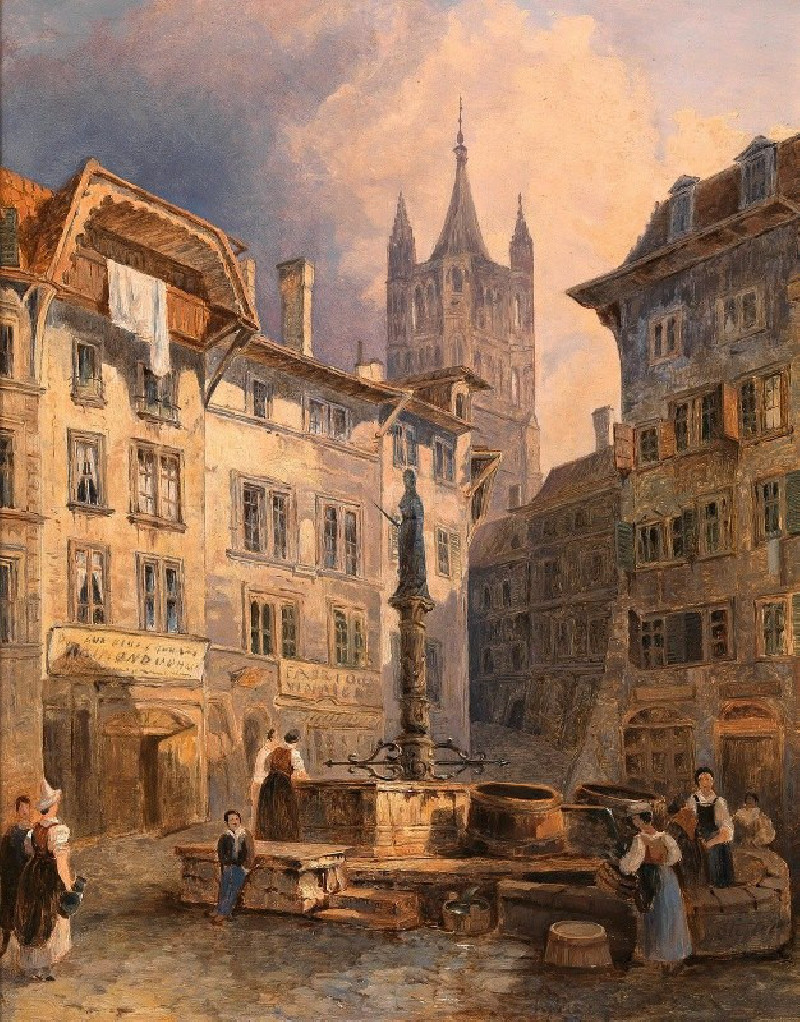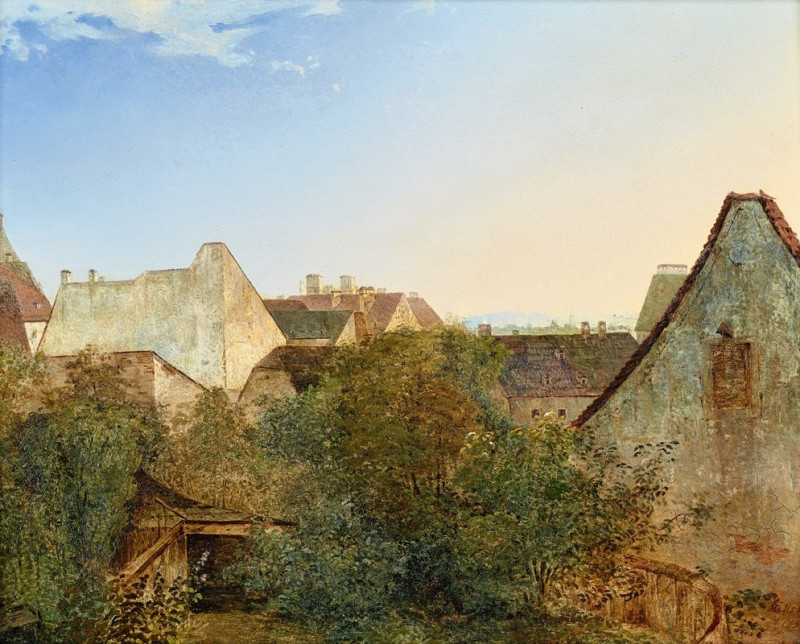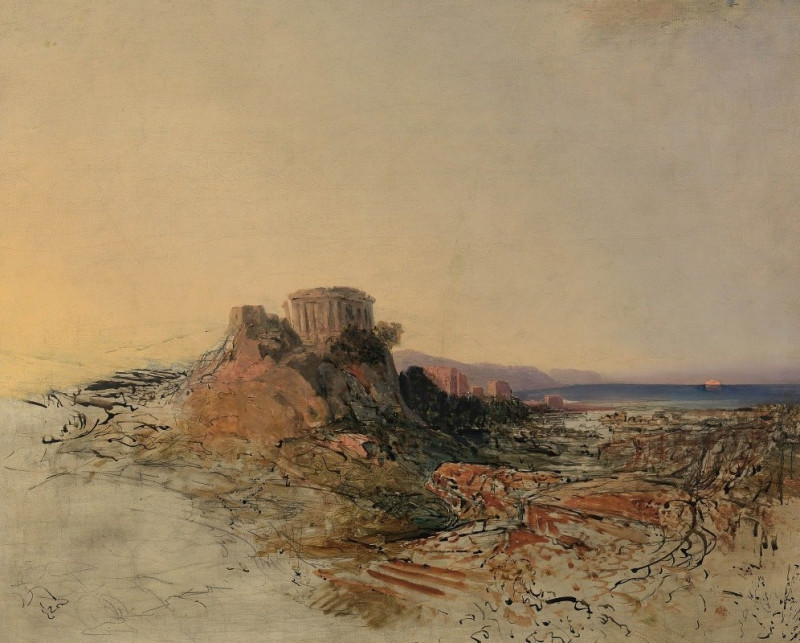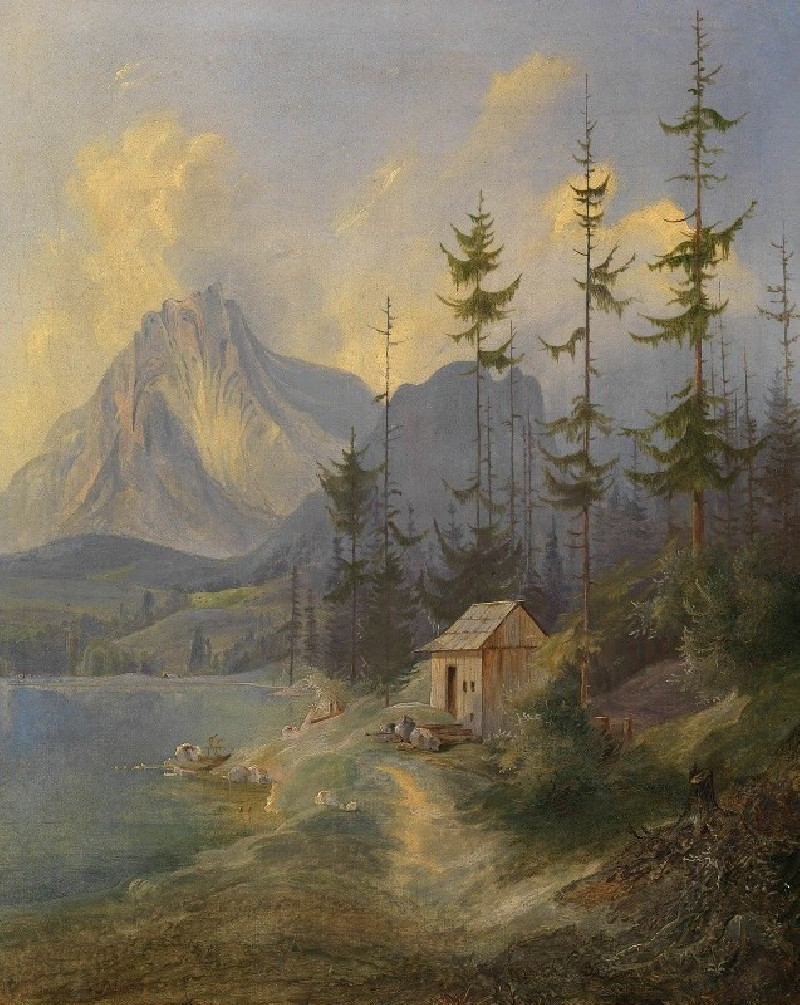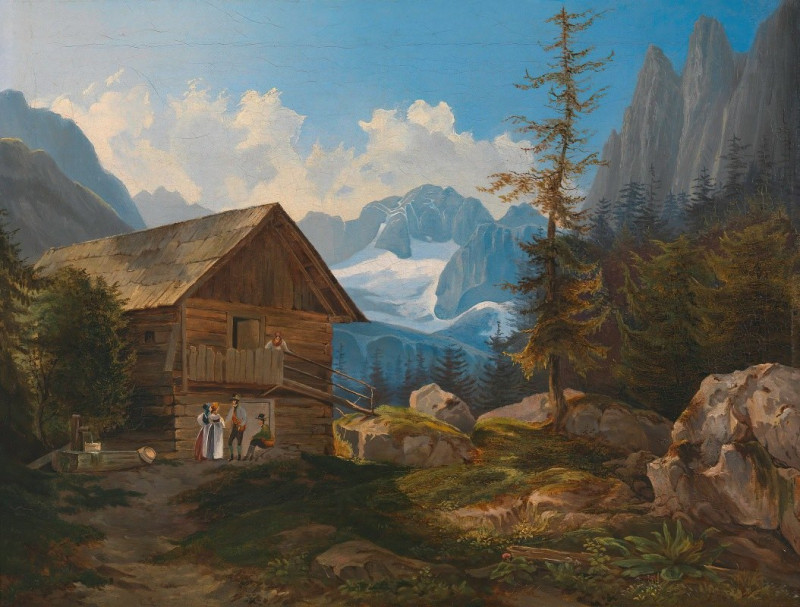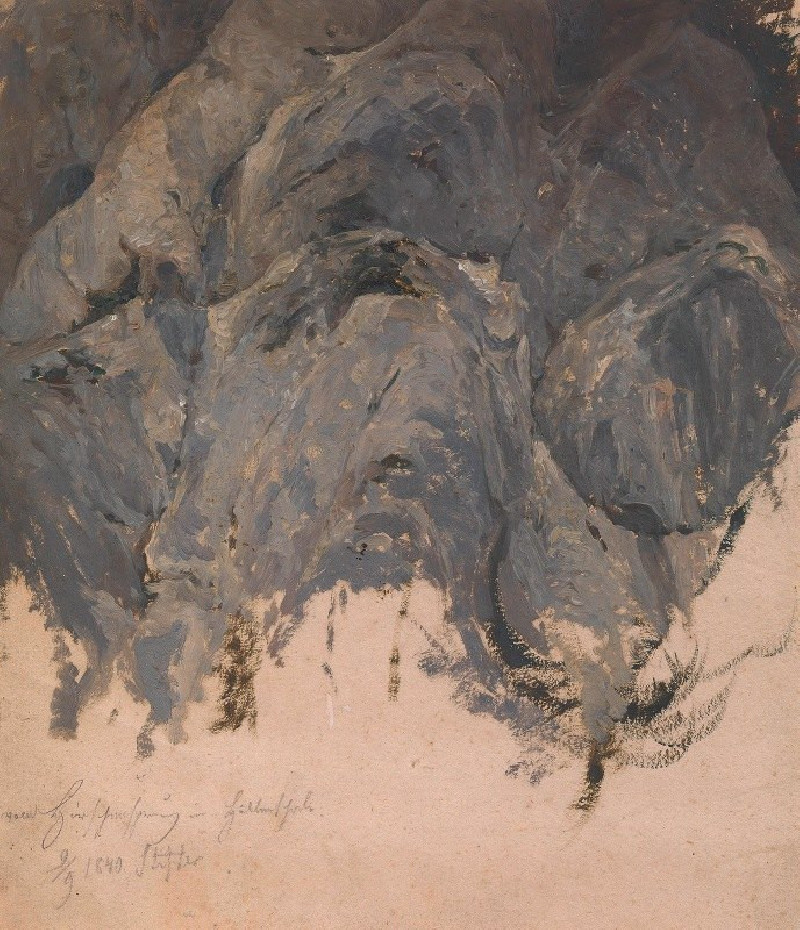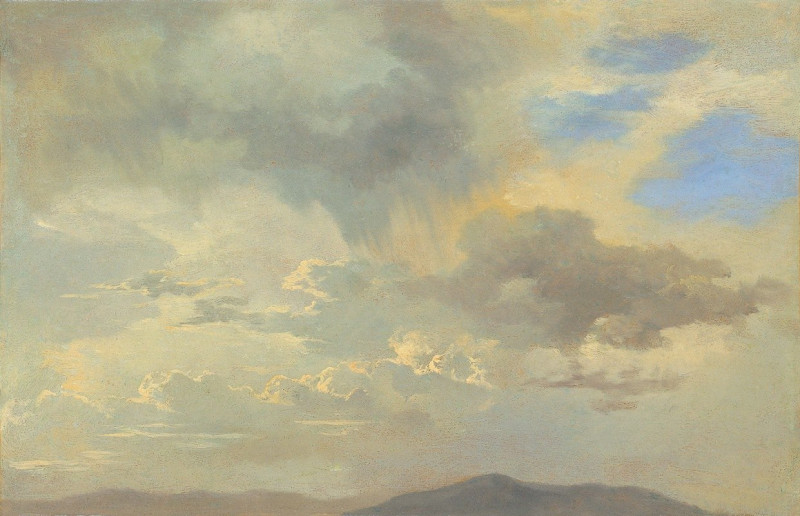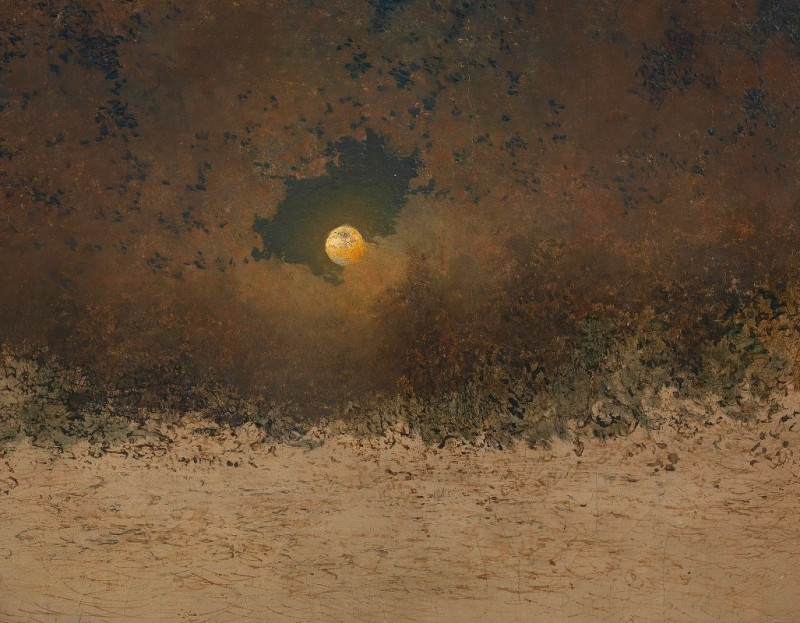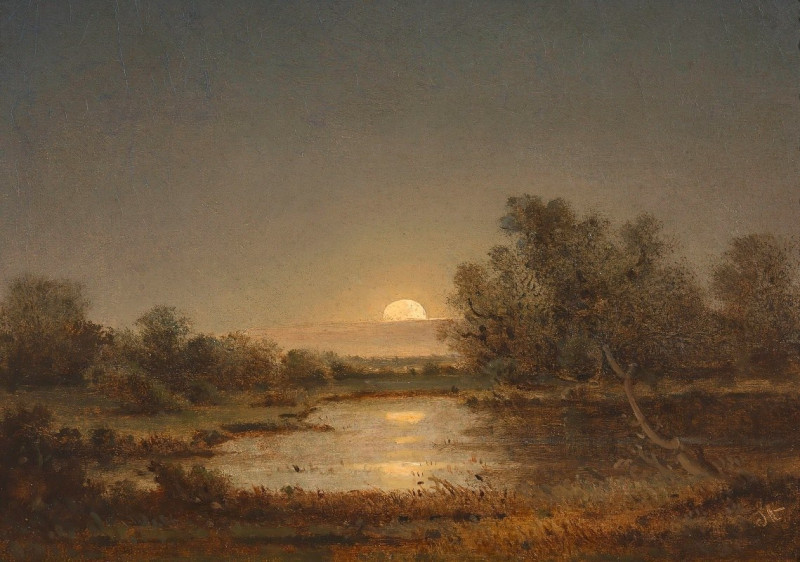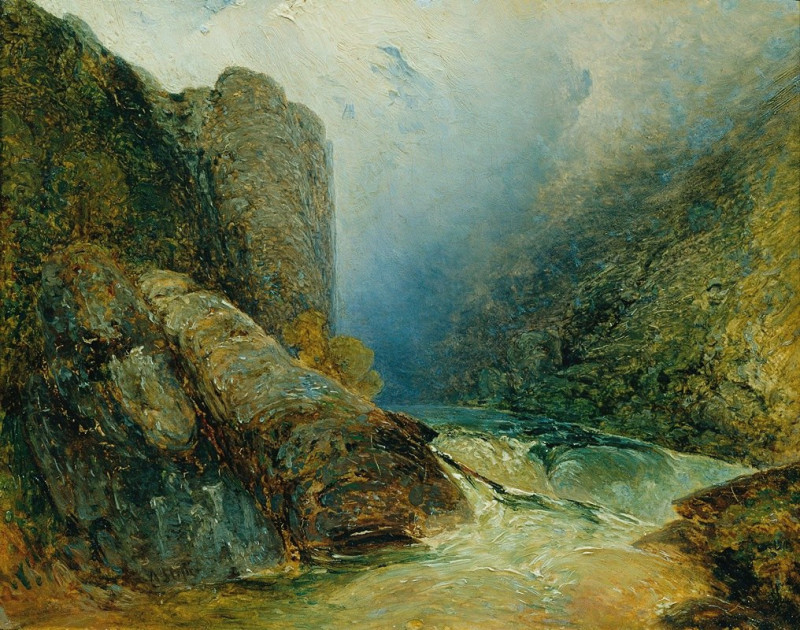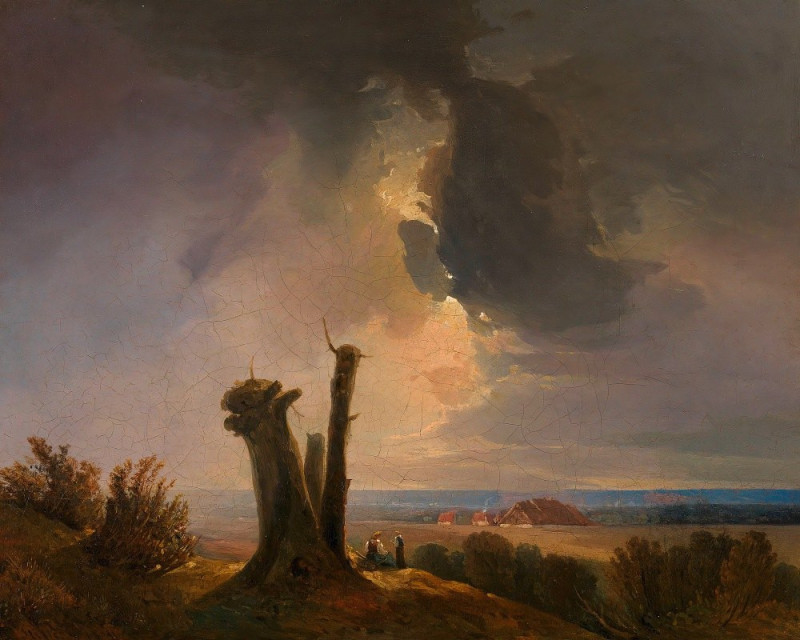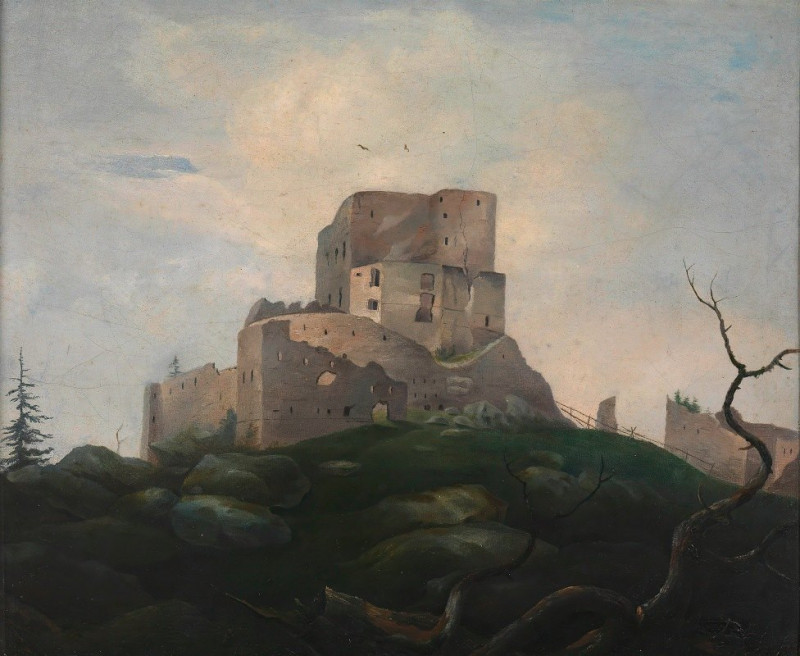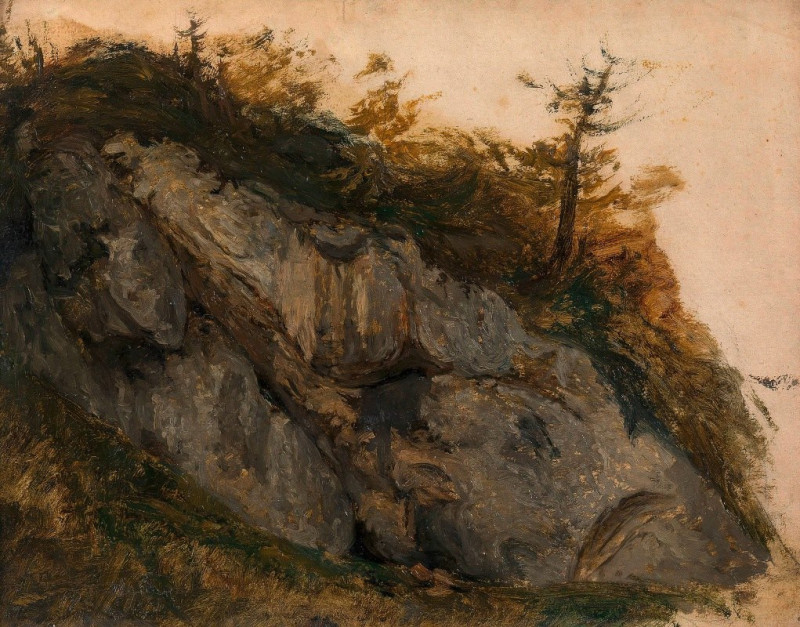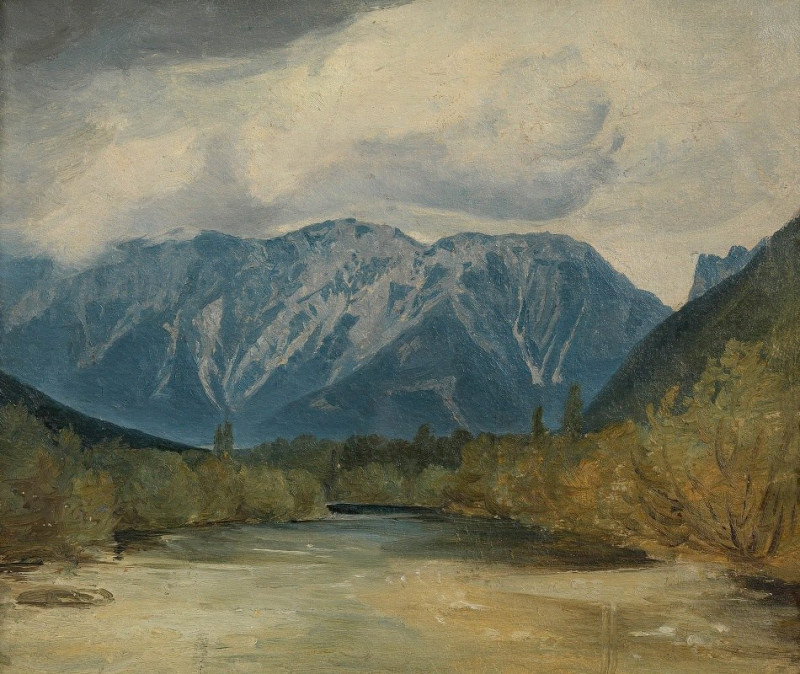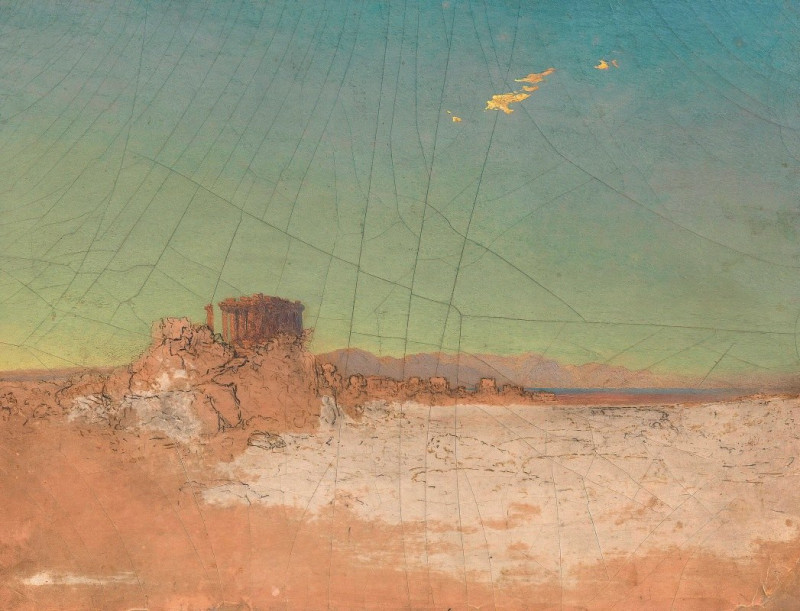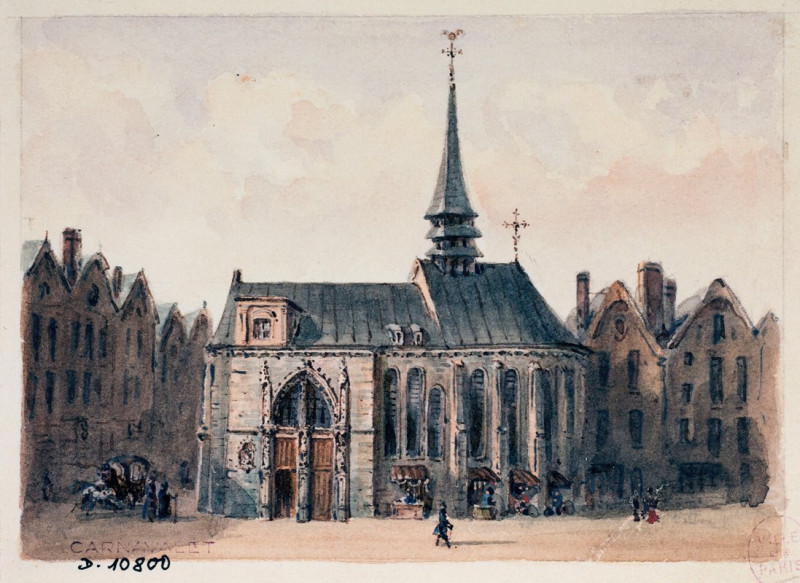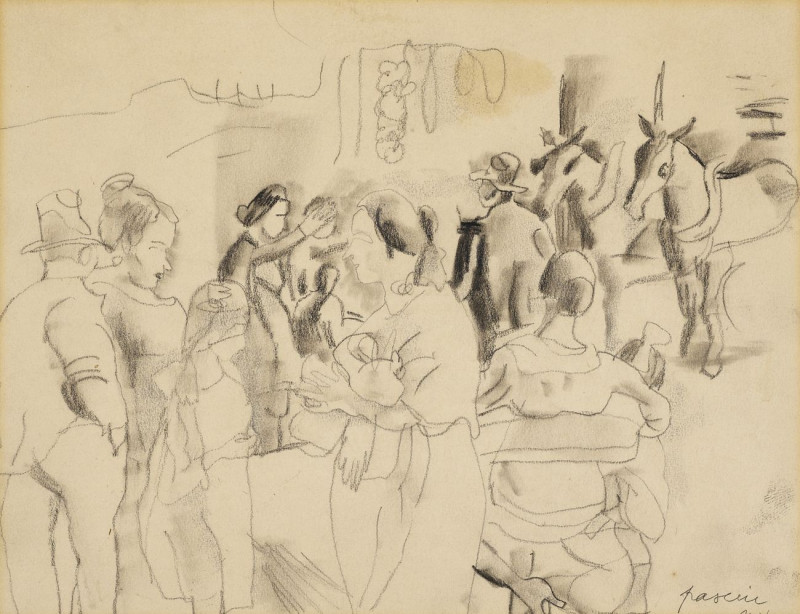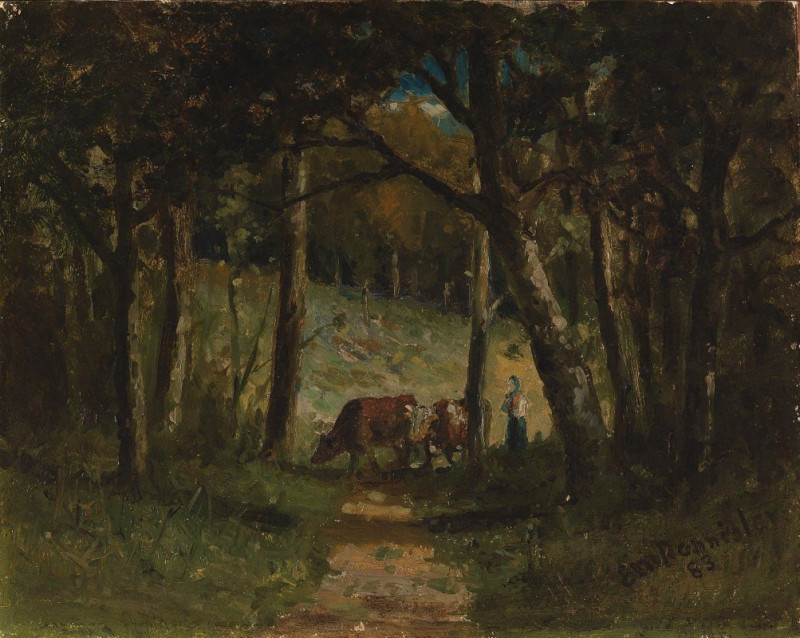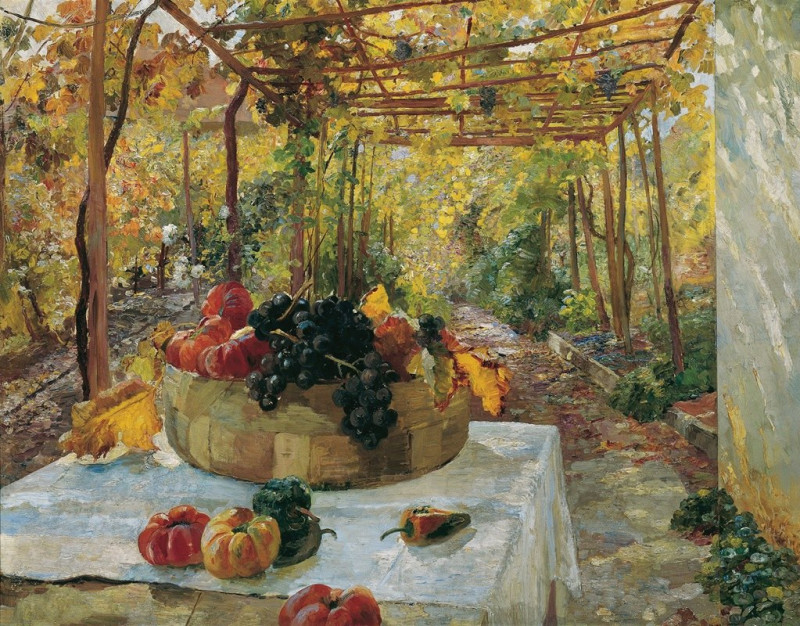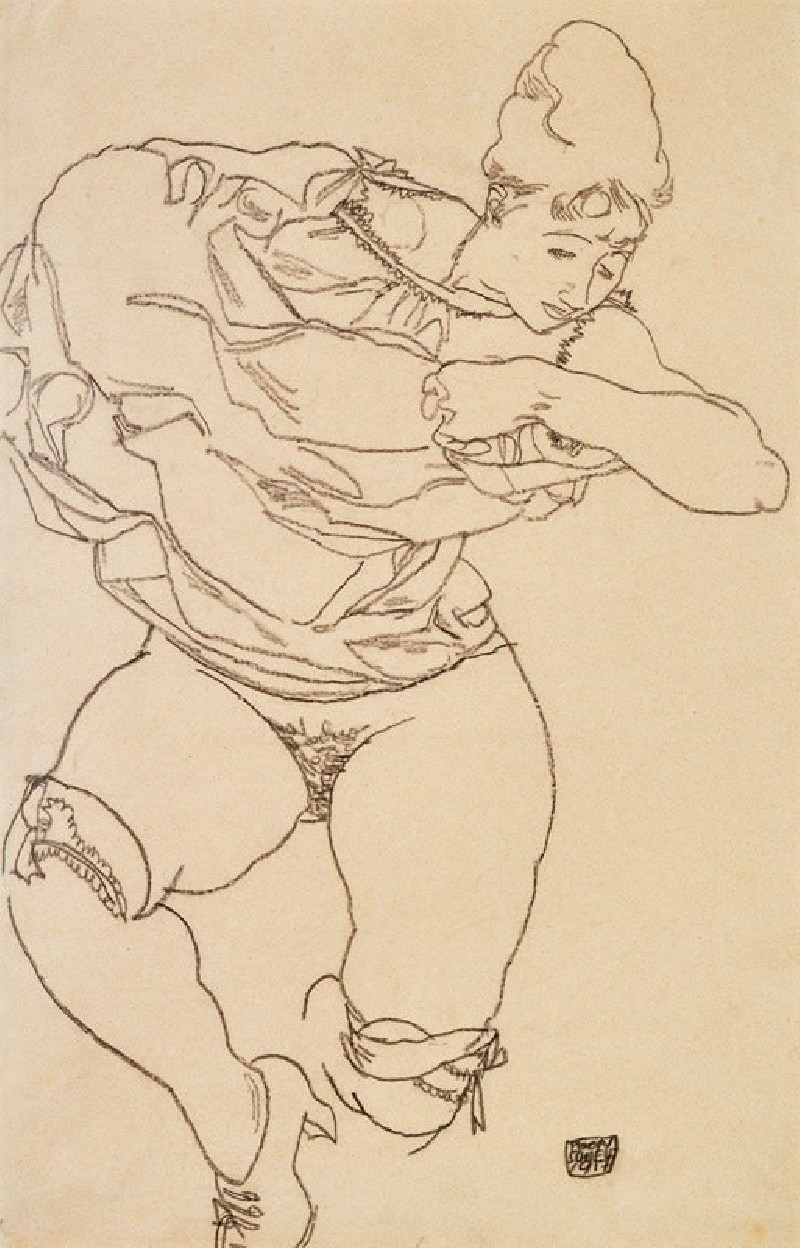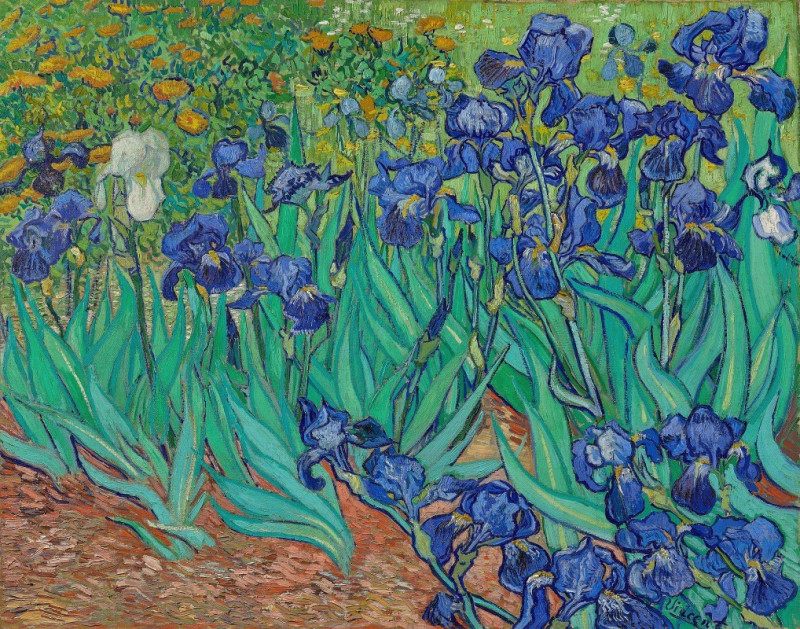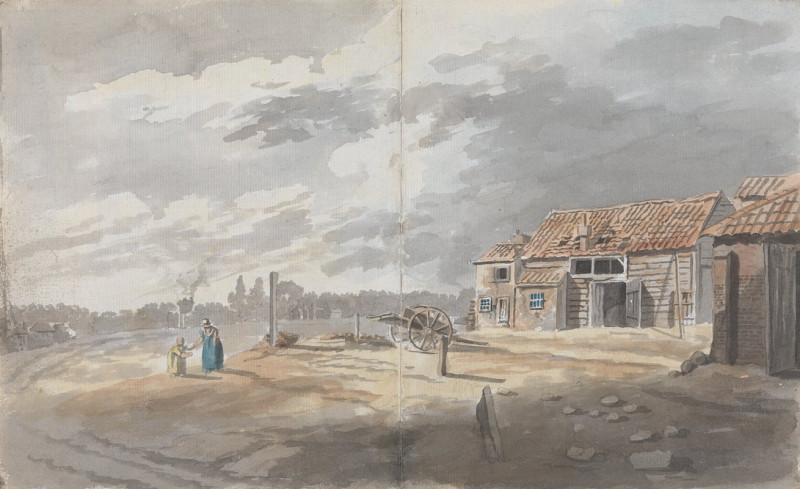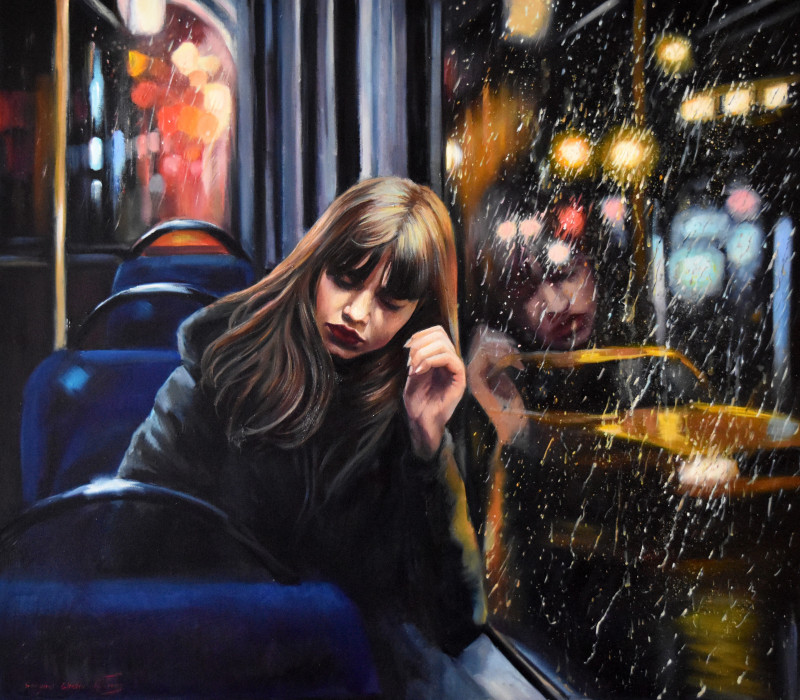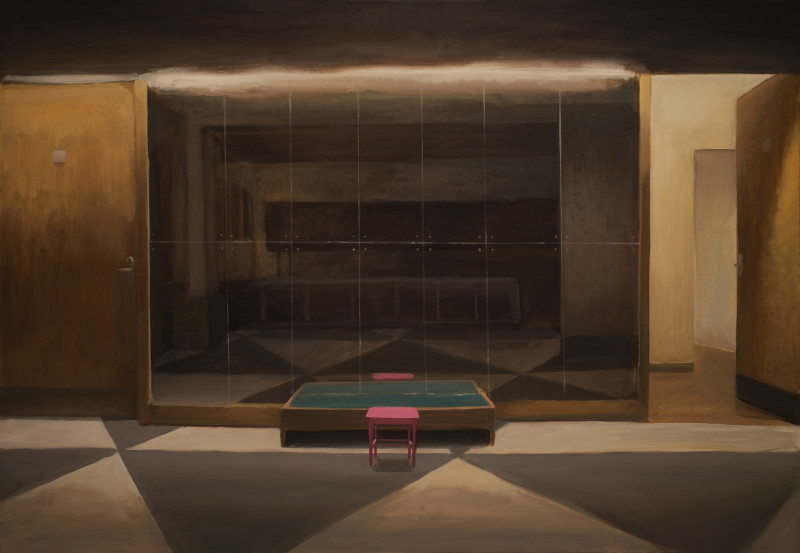Fabriksgarten in Schwadorf (ca. 1835)
Technique: Giclée quality print
Recommended by our customers
More about this artwork
In this captivating 1835 painting by Adalbert Stifter, titled "Fabriksgarten in Schwadorf," viewers are transported to a tranquil factory garden nestled in the heart of Schwadorf. Stifter masterfully captures the essence of peaceful industrial life, intertwining nature and architecture, and emphasizes the harmonious existence between human enterprise and the natural world.The composition features a placid canal leading the eye through the middleground, flanked by lush greenery and mature trees. On the right, a pile of neatly stacked logs adds a touch of rural industry, reflecting the period's reliance on natural resources. The calm water reflects the sky's soft, dynamic cloud formations, hinting at the changing weather, yet in a soothing palette of blues and creams.Dominating the background, the large building with its prominent red roofs and white walls stands as a testament to mid-19th-century architectural style. Its robust and orderly structure contrasts with the organic forms of the surrounding trees, yet it blends seamlessly into the scene, illustrating how industrial operations were once intimately tied to their environments.Stifter's use of light and shadow, together with his detailed brushwork, not only highlights the beauty of the landscape but also evokes a sense of quietude and stability. "Fabriksgarten in Schwadorf" is more than just a visual representation; it's a reflection on the balance between progress and preservation, a theme that remains ever-relevant.We invite you to delve deeper into this exquisite scene, to appreciate the quiet beauty of an era where nature and industry coexisted gracefully.
Delivery
Returns
Adalbert Stifter (1805–1868) was an Austrian writer, poet, painter and pedagogue. Born in Oberplan, Bohemia (now Horní Planá, Czech Republic), he was the eldest son of a wealthy linen weaver. Better known as a writer, Stifter was able to convey vivid and engaging landscapes in both his writing and painting. At the end of his life, exhausted by physical and mental illnesses, the artist died of suicide.


